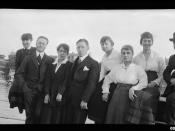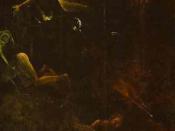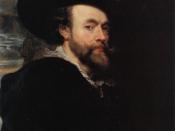In this paper I will compare and contrast two pieces of art work that are religious in nature. Through these pieces, I will show a theme of depicting death as heroic and beautiful, though painful and horrific.
The first piece that I selected is a marble statue made in Hellenistic Greece (323-31 BCE.). It was sculpted by Hagesandros, Polydoros, and Athenodoros and is titled "Laocoon and His Two Sons." The second piece is an oil painting on wood panel made during the Baroque time era (1590-1750 CE.). It was painted by Peter Paul Rubens and is titled "Fall of the Damned."
The sculpture of Laocoon is from the tales of Homer. It deals with the Trojan War and, in particular, the fabled Trojan Horse. Laocoon was a Trojan hero and a priest. Upon seeing the Trojan Horse, he told the Trojans not to accept "the gift" from their enemies, the Greeks.
The Trojans did not heed his warning and accepted the Horse. That evening, the Greeks came out of a secret door and slew the Trojans. Laocoon attempted to flee Troy with his sons. He was attacked and killed by sea serpents, sent by Poseidon, before the walls of Troy. This sculpture is a depiction of that moment.
Though this piece is mythological in nature, it does not serve a religious purpose. It was probably created for the rich to own and enjoy for their own pleasures. Many pieces similar to this (late Hellenistic style) were placed in gardens or transported to Rome. It has also been said that this piece was possibly created for the Roman Emperor Tiberious.
I feel that this piece is a fantastic image from the Hellenistic era. It contains many Hellenistic traits: detailed hair, deep set eyes, not in religious context, and does...


